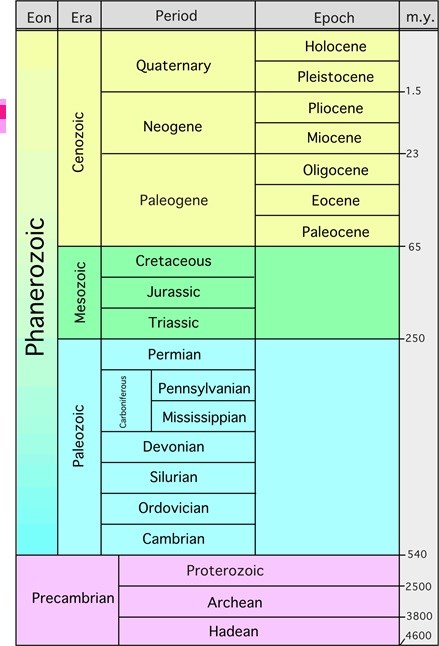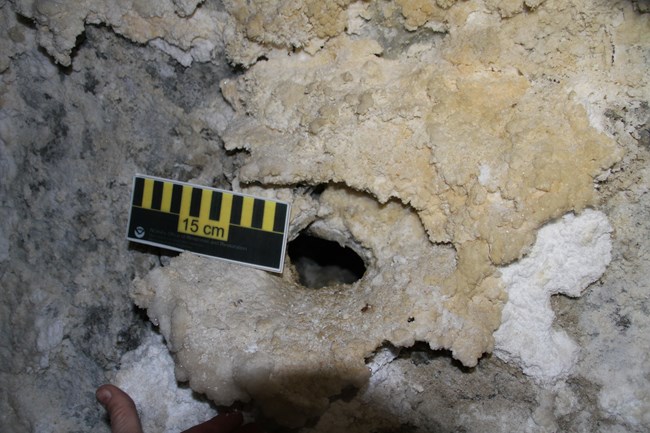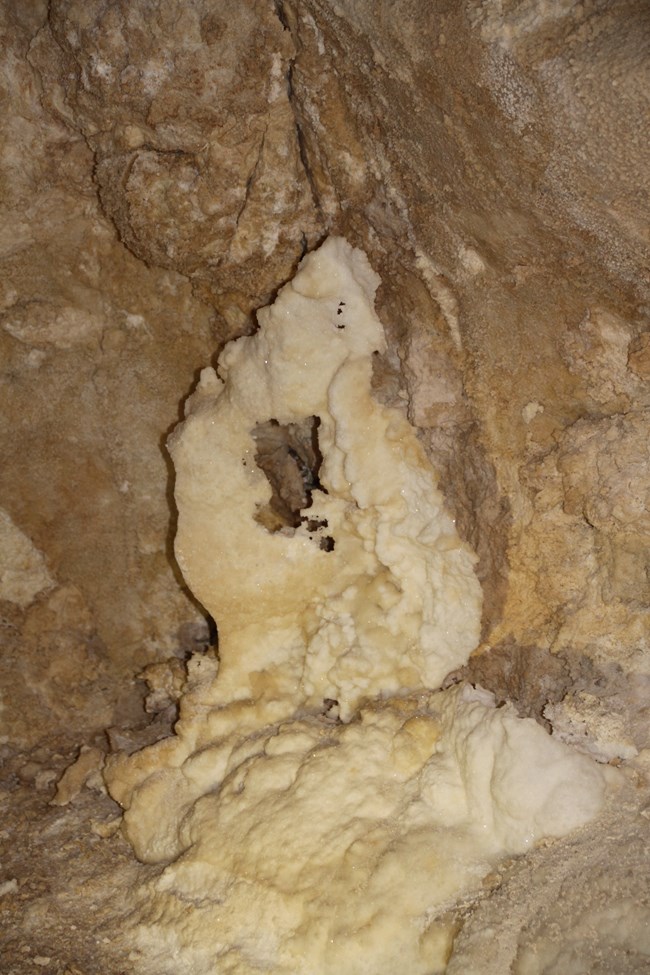Part of a series of articles titled The Midden - Great Basin National Park: Vol. 18, No. 1, Summer 2018.
Article
Lehman Caves: Little Understood but World-Class Cave
This article was originally published in The Midden – Great Basin National Park: Vol. 18, No. 1, Summer 2018.
by Louise D. Hose, retired NPS geologist
INTRODUCTION While preparing to develop new interpretive displays at Great Basin National Park, the Park staff came to realize that the most recent, professional geologists’ reports on the cave were from the early 1960s…..several years before most geologists had even heard of Plate Tectonics!
The early work was very good and done by USGS geologists with ties to caving, including soon-to-be NSS President George Moore. But, we know so much more now about speleogenesis. In the 1960s and 70s, we referred to Lehman and other eastern Nevada caves of the same ilk (such as Old Mans and Crystal Ball) as “phreatic caves” and their speleogens as “boneyard.” As our community started to understand hypogenic speleogenesis thanks to efforts in the Guadalupe Mountains, Europe, Mexico, and elsewhere, informed cavers visiting these caves recognized that Lehman and the others are surely the products of hypogenic waters, but almost nothing was written and no focused study attempted. That is, until now.
INTRODUCTION While preparing to develop new interpretive displays at Great Basin National Park, the Park staff came to realize that the most recent, professional geologists’ reports on the cave were from the early 1960s…..several years before most geologists had even heard of Plate Tectonics!
The early work was very good and done by USGS geologists with ties to caving, including soon-to-be NSS President George Moore. But, we know so much more now about speleogenesis. In the 1960s and 70s, we referred to Lehman and other eastern Nevada caves of the same ilk (such as Old Mans and Crystal Ball) as “phreatic caves” and their speleogens as “boneyard.” As our community started to understand hypogenic speleogenesis thanks to efforts in the Guadalupe Mountains, Europe, Mexico, and elsewhere, informed cavers visiting these caves recognized that Lehman and the others are surely the products of hypogenic waters, but almost nothing was written and no focused study attempted. That is, until now.

NPS Photo
WHEN AND HOW DID THE CAVE FORM?
Lehman Caves’ geology is remarkably understudied compared to most major caves so we don’t have as clear of understanding as we hope to develop in the future. One thing is obvious, however, the cave is very old and unrelated to the current surface conditions. How old? Probably between 2.2 and 10 million years old. It also formed very differently than the manner described in most beginning geology textbooks.
Before going any further with this discussion, there are several points worth remembering as we contemplate how this cave formed:
1. The entire cave may not have formed in the same way or at the same time.
2. There may have been several periods of cave development, each using different processes. At this time, we see four, clearly different periods of change in the cave but the story is likely more complicated. Much more research will be needed to fully understand this special cave
3. The cave void MUST have formed before the beautiful decorations. And, the cave development (called “speleogenesis”) might have been (and probably was) millions of years before most of the decorations (called “speleothems”) started filling in the void.

The Gypsum Annex, and likely all of the cave, was formed by warm, sulfur-rich waters rising from deeper in the earth while the Pole Canyon marble was still buried deep below the surface (but after the marble had cooled following the last metamorphic event). Waters rising from deep in the earth are called “hypogenic” and were likely also high in carbon dioxide content (like soda water). We don’t yet know where the water or the sulfur came from, but sulfur-rich warm/hot springs are still common in the Great Basin so it is not hard to envision such water flowing through the cracks in the Pole Canyon marble many years ago. Now, the thing to know about sulfur-rich water and limestone is that the water doesn’t easily dissolve the limestone until it is very close to the top of the water table and the sulfur can mix with free oxygen (O2 ). When this happens, sulfuric acid (i.e., battery acid) forms and it is extremely corrosive. So, water-filled tubes began to form where sulfur-rich water from below mixed with fresh water seeping in and carrying free oxygen from the surface. Since the waters were most aggressive near the top of the tubes, we look to the ceilings of the cave for evidence….bubble trails (smooth grooves in overhanging walls and ceilings), cupolas (smooth-walled ceiling domes), and ceiling drains (round tubes in ceilings and high on walls that look like drains but go up). These features are abundant throughout the cave and tell the trained eye that the cave formed from hypogenic waters. Carbon dioxide-rich waters also become much more aggressive as they reach the top of the water table and form the same sort of features, but the CO2 -charged waters are far less potent than the sulfur-rich waters.

Photo by Paul Dye
Sulfide-rich waters continuing to rise from a deep source were warmer than the cave’s wall rocks. As the water rose, two relevant changes took place:
1.) The reduced overlying rock and water pressure allowed hydrogen sulfide (H2 S) or sulfur dioxide (SO2 ) gas bubbles to form and travel along the ceiling of the underwater passage, ultimately being released into the air-filled passage at the top of the water table. If the water was also rich with carbon dioxide, which is usually the case, CO2 bubbles also travelled along the ceiling.
2.) As the sulfur-rich gases approached the air-filled passage, free oxygen became available which oxidized the sulfur gases. A potent acid, sulfuric acid, formed and attacked the marble passage walls. The most common reaction is:
CaCO3 + H+ SO4 2- + 2H2 O --> CaSO4 * 2H2 O + HCO3
Two products come from this reaction: gypsum (calcium sulfate) and a bicarbonate ion. In air-filled passages, the ascending thermal waters heated the air, including the water vapor/humidity in the passage, to a temperature higher than the cave walls. This inequity caused condensation on the marble/ limestone walls and ceilings as happens in a steam room but this condensation was sulfide-rich. The surface of those walls and ceilings were converted to gypsum.

Photo by Paul Dye
Then, why is the gypsum crust missing in the tour-portions of the cave? Gypsum, the ubiquitous product of sulfidic speleogenesis, is extremely soluble in water and the rest of the cave became very wet as abundant surface-derived water entered the cave after the enlargement phase passed. The flowing and dripping water not only deposited calcite speleothems but also likely dissolved and removed any earlier formed gypsum. The northwest part of the cave lacks much calcite, suggesting an impermeable cover between the Gypsum Annex and the surface protected the gypsum from invading surface waters.
Editor’s Note: Stay tuned to future issues of The Midden to learn about the next steps in the cave process.
Last updated: February 28, 2024
